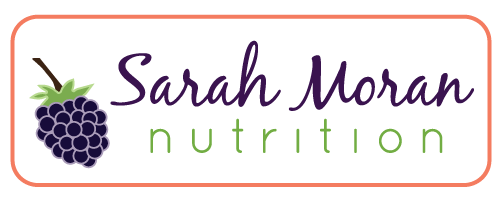 When I say refined grains what I'm really talking about is white flour. When grains are refined, they are stripped of the bran and germ, which contain most of the protein, fatty acids, fiber, iron and B vitamins, and only the starchy endosperm is left behind. This makes refined grains nutritionally inferior to their whole grain counterparts as well as related to type 2 diabetes, heart disease, and obesity. However, avoiding refined grains isn't as easy as it may seem. It comes down to knowing the intricacies of food packing and labels.
First, we need to look at the front of the box where so many seductive claims often reside. Understanding the phrases you see here will keep you from getting sucked in by seemingly healthy terminology.
When I say refined grains what I'm really talking about is white flour. When grains are refined, they are stripped of the bran and germ, which contain most of the protein, fatty acids, fiber, iron and B vitamins, and only the starchy endosperm is left behind. This makes refined grains nutritionally inferior to their whole grain counterparts as well as related to type 2 diabetes, heart disease, and obesity. However, avoiding refined grains isn't as easy as it may seem. It comes down to knowing the intricacies of food packing and labels.
First, we need to look at the front of the box where so many seductive claims often reside. Understanding the phrases you see here will keep you from getting sucked in by seemingly healthy terminology.
Multigrain
This means that several different kinds of grains are present in the product, but it doesn't speak to whether these are whole or refined grains.
Made with Whole Grain
This means just what it says: the product was made with whole grains. However, refined grains are likely included as well. It's like labeling a cookie that has orange zest in the batter "made with oranges."
Whole Grain
This sounds like just what we want, until you find out that in order to be labeled this way a product only needs to be made with 51% whole grains. In my book, that doesn't cut it.
100% Whole Grain
This is exactly what we want. When you see this, all of the grains in the product are whole grains. However, this doesn't get you off the hook from reading the ingredients list.
Now that we understand these front-of-the-box phrases, it's time to move on to the ingredients list on the back. Here is another place they can trip you up. This is what you need to know.
Wheat Flour
Many people think this is whole wheat flour, but it's not. The standard flour we use in cooking is all made from wheat. The only difference is the level of refinement. This is simply white flour in disguise.
Unbleached Wheat Flour
This is the same thing as "wheat flour" except they try to make it sound even better by adding the word "unbleached." While this is better than bleached flour, it's still white flour and that is not what we want.
Enriched Wheat Flour
White flour again, but here they add "enriched" hoping to give an air of health. However, all white flour is enriched by law because of the way refinement removes nearly all of the nutrients. Also, this comes nowhere close to the nutrient content of the original whole grain.
Whole Wheat Flour
Jackpot! When you see this in the ingredients it means that the flour is whole wheat.
So, when you're doing your shopping, look for only whole wheat or whole grain flour in the ingredient list and no white flour. It's also important to note that just because a product has whole grains doesn't make it healthy. For example, many cereals are marketed as having whole grain, but then the second ingredient is sugar. You have to consider the whole product in its entirety to determine whether or not it is a good buy.
 When making the change to whole grains, a simple switch you can make is to use whole grain pasta. Nowadays, not only can you buy whole wheat varieties, but other grains are being used too, such as spelt, kamut, and even brown rice. Some people might be worried about the taste or texture of whole grain pastas compared to those made with refined flour. However, it has been my experience that most people don't see a difference when they switch over and, if anything, find that the whole grain pastas have a heartier texture. Another plus is that dried pasta is a cheap and quick meal that can be made on a busy weeknight and can be totally transformed depending on what toppings you use. It can also be added to soups or used in a casserole (lasagna anyone?). If you're still unsure, try mixing refined and whole grain pastas 50/50 in a dish and see how you like it. This can help you transition to eating only whole grain pastas by gradually increasing the amount of whole grain and decreasing the amount of refined pasta.
When making the change to whole grains, a simple switch you can make is to use whole grain pasta. Nowadays, not only can you buy whole wheat varieties, but other grains are being used too, such as spelt, kamut, and even brown rice. Some people might be worried about the taste or texture of whole grain pastas compared to those made with refined flour. However, it has been my experience that most people don't see a difference when they switch over and, if anything, find that the whole grain pastas have a heartier texture. Another plus is that dried pasta is a cheap and quick meal that can be made on a busy weeknight and can be totally transformed depending on what toppings you use. It can also be added to soups or used in a casserole (lasagna anyone?). If you're still unsure, try mixing refined and whole grain pastas 50/50 in a dish and see how you like it. This can help you transition to eating only whole grain pastas by gradually increasing the amount of whole grain and decreasing the amount of refined pasta.
 Believe it or not, popcorn is a whole grain. However, it gets a lot of flack because it’s usually covered with too much salt and butter. It’s a situation we see quite often, where the food itself is not unhealthy, but the preparation method or toppings take it to a bad place. As with any food, the best way to eat popcorn is to start as close to the raw ingredient as possible so you know what’s going into it. I prepare my popcorn using an air popper. If you don’t have one, they are quite affordable. Mine cost me about $20 and if you eat popcorn often, you will save money in the long run because you will only be paying for the unpopped kernels rather than all of the processing and packaging that goes into microwave varieties. Plus you only need a small amount of kernels (about 2 tablespoons) for a hefty serving. Then, you can add your own toppings like your favorite herbs and spices or grated parmesan. Here’s to healthy snacking!
Believe it or not, popcorn is a whole grain. However, it gets a lot of flack because it’s usually covered with too much salt and butter. It’s a situation we see quite often, where the food itself is not unhealthy, but the preparation method or toppings take it to a bad place. As with any food, the best way to eat popcorn is to start as close to the raw ingredient as possible so you know what’s going into it. I prepare my popcorn using an air popper. If you don’t have one, they are quite affordable. Mine cost me about $20 and if you eat popcorn often, you will save money in the long run because you will only be paying for the unpopped kernels rather than all of the processing and packaging that goes into microwave varieties. Plus you only need a small amount of kernels (about 2 tablespoons) for a hefty serving. Then, you can add your own toppings like your favorite herbs and spices or grated parmesan. Here’s to healthy snacking! When I say refined grains what I'm really talking about is white flour. When grains are refined, they are stripped of the bran and germ, which contain most of the protein, fatty acids, fiber, iron and B vitamins, and only the starchy endosperm is left behind. This makes refined grains nutritionally inferior to their whole grain counterparts as well as related to type 2 diabetes, heart disease, and obesity. However, avoiding refined grains isn't as easy as it may seem. It comes down to knowing the intricacies of food packing and labels.
First, we need to look at the front of the box where so many seductive claims often reside. Understanding the phrases you see here will keep you from getting sucked in by seemingly healthy terminology.
When I say refined grains what I'm really talking about is white flour. When grains are refined, they are stripped of the bran and germ, which contain most of the protein, fatty acids, fiber, iron and B vitamins, and only the starchy endosperm is left behind. This makes refined grains nutritionally inferior to their whole grain counterparts as well as related to type 2 diabetes, heart disease, and obesity. However, avoiding refined grains isn't as easy as it may seem. It comes down to knowing the intricacies of food packing and labels.
First, we need to look at the front of the box where so many seductive claims often reside. Understanding the phrases you see here will keep you from getting sucked in by seemingly healthy terminology.